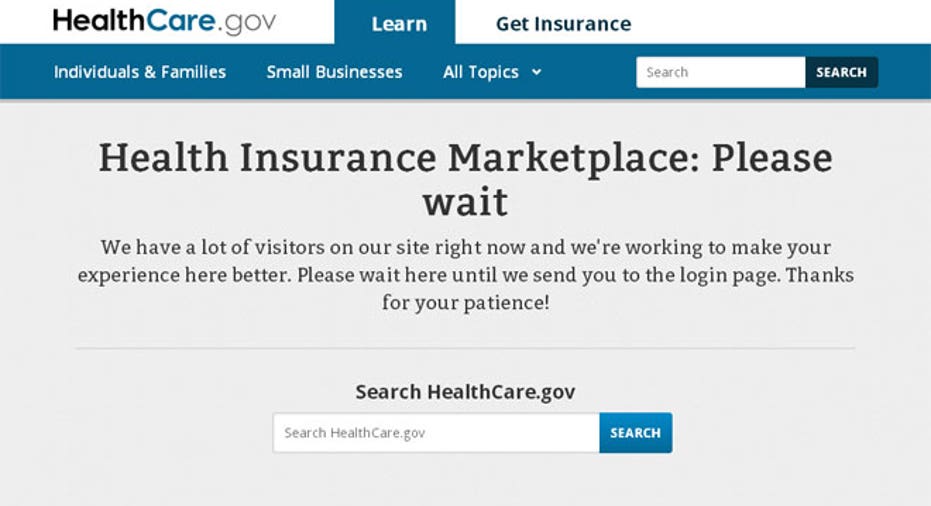Cost Trumps ‘Invincibility’ for Millennials Enrolling in ObamaCare

Young people are arguably the most important group of enrollees in the insurance marketplaces under the Affordable Care Act. With the assumption of being healthy, this demographic would help offset the industry costs of caring for older and potentially sicker enrollees.
The president’s signature legislation prohibits insurance companies from discriminating against anyone with a pre-existing condition.
During the 2014 enrollment period, a big question mark hung over the success of the law: would young people’s “invisibility-mentality” discourage them from signing up?
Turns out, the price tag was more of a deterrent. According to a new report from Deloitte, costs played a more important role in the decision-making process among enrollees ages 18 to 34 when signing up for coverage than the invincibility factor.
The risk management and consulting firm shared its data exclusively with FOXBusiness.com, and surveyed 500 millennials in April after the end of the law’s first enrollment period. They found that young people said they didn't enroll due to what they described as high costs and lack of value in signing up coverage.
Eight million people gained insurance on the federal and state marketplaces in year one of open enrollment, with 35% being under age 35 and 28% were between the ages of 18 and 34, falling shy of the 40% target the administration had set.
The ACA mandates that every individual in the country have coverage by the end of open enrollment period, or face a fine of $95 a year or 1% of their annual income for failing to comply. The fine was just recently capped at $2,448 per person.
The report finds 66% of respondents say their top reason for remaining uninsured is because they can't afford coverage. Forty-six percent report the costs of coverage outweigh the benefits. In addition, 24% say they'd rather pay for care when they need it compared to 19% who say they simply don't think they need insurance because they are healthy.
With health-care costs forecast to rise as much as double-digit percentages in some states next year, cost may become a be a bigger deterrent in the future.
Bill Copeland, U.S. Life Science and Health Care Leader for Deloitte, says part of the issue with ObamaCare is its one-size-fits all approach to insurance.
“If we design products to subsidize the older population, or design products that in and of themselves will only be appealing to that population, it will be an issue,” Copeland says. “That is another major issue that looms if we will be successful in getting most people to have insurance.”
Young people also waited until the last minute to enroll in coverage, the report finds. Fifty-five percent of respondent respondents say they visited HealthCare.gov or a state exchange to enroll, with the older half of the group (ages 24-to-35) doing so more than the younger enrollees. Twenty-nine percent said they waited until the last month to enroll, the report says. And of those who remain uninsured, 54% say they did not visit Healthcare.gov or a state exchange.
Of those ages 18-to-34 64% say the federal exchange lacked information and 28% say they encountered difficulties when trying to sign up. In addition, more than one-fourth claim that these technical issues forced them to abandon their attempts to enroll.
Sara Thomas, director of the Deloitte Center for Health Solutions, says it was surprising to see how many young people actually got their information from friends and family when choosing a plan, rather than relying on information on the web.
“We thought they would be much more likely to use new kinds of media to inform them about choosing a health plan, but we found it was more in line with older generations, using family and friends first,” she says.
But those who did use online exchanges were frustrated with the issues they ran into, Thomas says, adding that 41% of those who remained uninsured said they experienced technical difficulties that stopped them from trying to enroll.
The Subsidy Factor
Subsidies to lower the cost of care are also key among young people, with 50% saying subsidies were important and 62% of those ages 18-to-34 saying they were "very" or "somewhat" important to them becoming insured.
However, half of all respondents report they didn't know about subsidies to help pay for their insurance. These premium tax credits were available in 2014 for those making up to 400% of the federal poverty level-- $45, 000 for an individual and $94,000 for a family of four.
Due to two court decisions last week, it is unclear at this point if subsidies will be available in 2015. A D.C. appeals court ruled that the IRS acted without congressional approval in expanding the subsidy program for the 36 states and District of Columbia operating on Healthcare.gov. However, the 4th District Court upheld the validity of these subsidies.
Analysts expect the Supreme Court to weigh in on the matter, which stands to impact more than 5 million people who received assistance in paying for their health insurance in year one of ObamaCare.
Copeland doesn’t expect the decision striking down subsidies to be upheld, but says if it was ruled unconstitutional, it would really dissuade young people from singing up.
“If you can only get a subsidy from a state exchange, I think people would dis-enroll,” he says. “Otherwise, we wouldn’t be in this place [nationwide] with 50 million people still unenrolled.”